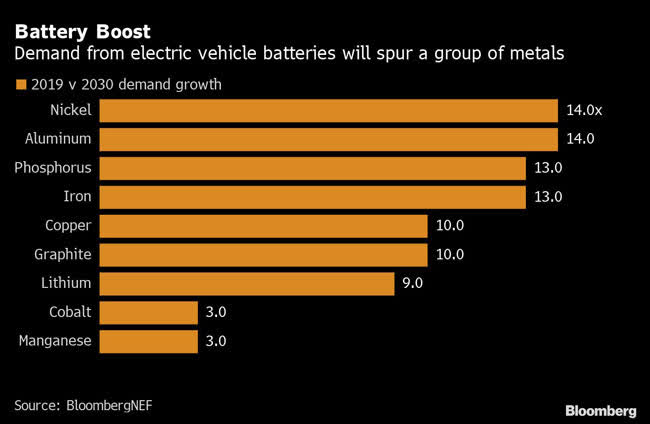
SPONSOR: Tartisan Nickel Corp’s flagship asset, the Kenbridge Nickel Deposit, hosts an updated resource estimate of 7.5 Mt of 0.58% nickel and 0.32% copper for a total of 95 Mlb of contained nickel. Tartisan also owns equity stakes in Eloro Resources Ltd. that is exploring the ISKA ISKA project, and the low-sulphidation epithermal La Victoria Gold/Silver Project in Ancash, Peru. Class 1 Nickel & Technologies Limited who are advancing the Alexo-Kelex Dundonald nickel project near Timmins Ontario and Peruvian Metals Corporation who are operating a toll mill in Peru. Click Here For More Info

With the spotlight shining on nickel, Canadian miner Sherritt International’s (TSX:S) CEO David Pathe sees brighter days ahead.
Sherritt, which has significant assets in Cuba, has weathered storms ever since Pathe’s predecessor gambled on partnering with Havana’s communist government in the 1990s, and the miner was pushed to the brink during president Trump’s tenure, when early last year, the White House began ramping up sanctions on Cuba.
Nickel has been a tough business since the financial crisis, and Sherritt’s market value sunk to a record low C$29.8 million ($22.8 million) in March from its 2008 peak of C$4.8 billion, trading at a low of eight Canadian cents.
In February, Sherritt had announced a proposed transaction designed to improve its capital structure and reduce the company’s debt by half, and at the end of August, Pathe said it closed a “significant restructuring” of all of its debt tied to exiting the costly Ambitovy project in Madagascar, eliminating C$300 million in debt and pushing out loan payments due next year to 2026.
Pathe said covid-19 pandemic disruptions haven’t had any material effect on operations, after making some adaptations, and the company is on track to hit production targets.
The world needs more battery metals
Given the chasm between future demand for battery raw materials used in electric vehicles and new supply entering the market over the next decade, the current low price environment for lithium, cobalt, graphite and less so nickel is not likely to endure.
At its much-hyped Battery Day event in September, automaker Telsa CEO Elon Musk called on the world’s miners to make more nickel, while hardly mentioning cobalt.
“There isn’t any new, meaningful capacity in class 1 nickel anywhere in the pipeline, because the price of nickel over the last ten years hasn’t supported it”
David Pathe, CEO, Sherritt International
While Pathe is optimistic about nickel demand, he said reducing cobalt by volume will continue, but doesn’t see it being eliminated from the battery metals supply chain.
“There isn’t any other metal that does what cobalt does in terms of stability and seeing a battery through temperature changes and the thermodynamics of charging,” Pathe told MINING.COM. “We don’t think you’ll see cobalt eliminated from batteries any time soon.”
While Musk’s call for miners to produce more nickel lifted prices, California-based Tesla couldn’t buy from Sherritt without violating the US embargo on Cuba.
“We are expecting to see a bit of an inflection point in nickel prices,” Pathe told Bloomberg, adding the attention Musk is drawing “is good for the industry as a whole, including us.”
Pathe said he is hoping that now, the differentiation between class 1 nickel for batteries and nickel pig iron, which accounts for most of the supply in the market, will strengthen class 1 nickel price.
“The challenge with the whole automobile industry now is that they are looking at their plants to ramp up electric vehicle production in the next 5 to 20 years, and if you look at global nickel production – class 1 nickel, used for batteries, and the capacity just isn’t there, and there isn’t any new, meaningful capacity in class 1 nickel anywhere in the pipeline, because the price of nickel over the last ten years hasn’t supported it. ”
Pathe said automakers are “coming to appreciate that, and seeing how different the mining industry is from the automobile industry.”
Mines will be needed to feed new industrial production, and Pathe said automakers are getting their minds around their nickel supply strategy and what it’s going to look like.
Pathe said there isn’t enough class 1 nickel production in the pipeline, and said plants need metals supply to ensure the viability of the auto (EV) industry, while North America catches up with Europe and China.
“That is the way the world is going, and I think its further evidence that we are getting closer and closer to a tipping point. Disruptive changes take a while to build momentum,” Pathe said.
SOURCE: https://www.mining.com/not-enough-class-1-nickel-production-in-the-pipeline-sherritt-ceo/




.jpg;w=960)
